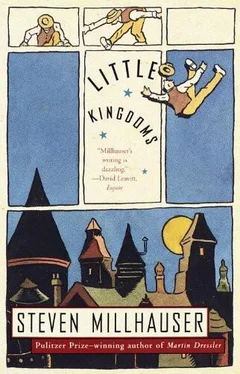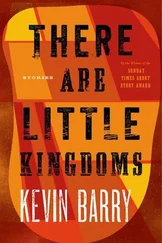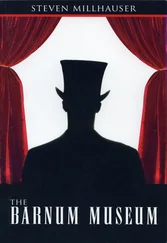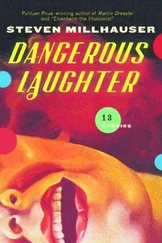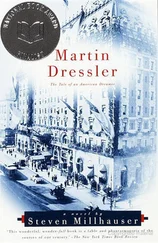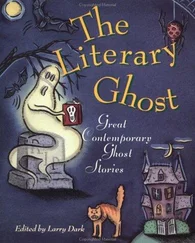As an undergraduate Moorash had frequented the Boston Athenaeum, and in his two years abroad with William Pinney he had spent many days in the art galleries, auction rooms, and temporary exhibition halls of London and Paris, as well as in a number of private collections to which Pinney had entry, but Moorash was at best a restless, impatient visitor of picture galleries, “those most fashionable of graveyards with their numbered headstones” (letter to Elizabeth, 14 May 1833). His refusal to accompany Pinney to Italy is well known; he argued that the entire country was “an interminable picture gallery decorated with olive trees” (letter of William Pinney to Sophia Pinney, 6 June 1833). The only pictures he is known to have viewed with pleasure were not paintings at all, but satirical mezzotints hung in the windows of printsellers’ shops. A row of paintings in a gallery, he once remarked to Edward Vail, reminded him of a line of prisoners waiting to be shot. This irritable response to what he called the “necessary evil” of art museums no doubt partly accounts for the infernal theme, but it would be a mistake to see in the painting no more than revenge for the “months of smothering boredom” he claimed to have suffered among the numbered headstones. Moorash believed profoundly in the power of painting to affect the beholder. In a letter to Pinney (undated, c. 1835) he speaks of the “impressive nature of art, that is, its power of impressing itself onto the mind and soul, as a knife impresses itself in flesh,” and behind the playfulness and mockery of The Infernal Picture Gallery we hear the unmistakable note of this deep theme.
The Infernal Picture Gallery is based on no known art museum or private collection. It shows two soaring walls crowded with pictures in carved and gilded frames (in all, thirty-eight paintings are visible), as well as the statue of a naked nymph emerging from her bath on a marble pedestal in one corner. A doorway opens onto a vista of arched galleries. Two copyists are seated at their easels in opposite corners of the room. The gallery holds some half dozen well-dressed visitors, all of whom look up aghast or press their gloved hands to their frock coats and frilled bosoms. From the thick frames, figures are emerging. A fat naked woman who appears to have descended from an allegorical banquet stands smiling before a stiff, startled gentleman in a frock coat, while a red-faced colonel ogles her through his monocle. A naked Jove, covering his genitals with a bunch of green grapes, appears to be abducting a terrified woman in a fashionable cloak; an Indian in war paint brandishes a tomahawk. But it is not always possible to tell which figures are visitors to the gallery and which have escaped from the frames — a confusion that is surely part of Moorash’s intention. Indeed this satirical questioning of the boundaries between the illusory and the real is given further complexity by a striking comic detail: one of the copyists is shown leaning uneasily away from his canvas, from which a leg in a shiny black boot is emerging. Since the canvas is a precise copy of a painting on the wall, Moorash has introduced a figure who is twice removed from life. But his artistic playfulness does not end here: the emerging boot casts a clearly delineated shadow on the picture frame, while the boot remaining in the picture casts its own painted shadow. Thus two orders of shadow are established, one “real” and one “painted,” although the viewer is meant to be aware that the “real” shadow is itself painted; and to complicate matters a little, the picture being copied contains a statue that casts a shadow, and the copyist himself casts a shadow on the gallery floor. But despite such elements of epistemological playfulness and outright satire, The Infernal Picture Gallery has a darker impulse, for a number of the images are disturbing: a lion holds in its jaws the bitten-off leg of a man-about-town, who lies staring in horror at his blood-gushing stump from which hang shreds of veins and sinews; a bandit with a red scar on his cheek is plunging a dagger into the neck of a kneeling woman; and in a dark corner a lady with a torn bodice and disheveled hair is struggling to free herself from a leering satyr, who is pulling her head back by the hair and squeezing the nipple of one bared breast. The painting, with its clearly drawn figures and its reddish light, hovers uneasily between humor and horror.
The grotesque and at times sadistic elements of The Infernal Picture Gallery have raised questions about its connection with the Diabolist movement (fl. 1835–36), especially in light of Moorash’s defense of their work against the bloodless academicism of the day, but aside from a few features so general as to be meaningless there is little to connect Moorash’s satirical painting with the dubious productions of that school. Typical Diabolist works treat subjects that are intended to be shocking and titillating: torture, slaughter (especially of half-naked women by Turkish soldiers in colorful uniforms), orgiastic Roman banquets full of overturned flagons and bared breasts, and studies of bleeding women mangled by wild animals. John Pine (1805–1849), who after his defection from the Phantasmacists became the acknowledged leader of the Diabolist school, was noted for his meticulous studies of partially dissected female corpses, his chained women gnawed by rats, and his forest scenes in which satyrs with very hairy haunches sodomize pale prepubescent girls with dreamy blue eyes, rosy lips, and ivory buttocks. Pine was arrested in 1836 and after his release became a fashionable still-life artist specializing in moist bunches of grapes, bloody slabs of meat, and sunstruck wineglasses half-filled with ruby wine. Moorash’s alleged praise of Pine (in a conversation with Edward Ingham Vail) should not be misconstrued as praise for pornography and the eroticism of death, but rather must be understood as an attack on the fashionable correctness and tameness of Vail and his set.
[7]
GALATEA
1837
Oil on canvas, 44 × 35 1/4 in.
The second painting of the “Power of Art” cycle was begun in the last week of March and completed on 21 April, a comparatively rapid rate of composition for Moorash. The broad, free brushstrokes of Elizabeth in Dream have here been replaced by the tight, controlled brushwork of a neoclassical academician striving for the scrupulous rendition of minute detail and a high degree of linear definition. So extreme is Moorash’s retreat from his earlier experiments in the loosening of contour that one cannot but suspect the artist’s deliberate and almost parodic effort to satisfy a taste not his own.
The source of the Galatea legend is Ovid’s Metamorphoses (243–97), in which, it should be noted, Pygmalion’s statue is unnamed; but Moorash treats the incident freely, in a manner without precedent. Galatea is shown in a state of transition, half marble and half flesh: the living half is struggling to free itself from the cold stone. It is a disturbing conception, in which the living creature appears to be trapped in marble. The living half is nearly as white as the marble half, but very faintly suffused with a ghostly flesh tone. Nothing is shown of the sculptor except his tense hand, from whose veins and sinews we infer a response of terror.
[8]
THE UNVEILING
1837
Oil on canvas, 38 1/2 × 29 1/2 in.
The dark sinister light that obscures sharpness of outline, the deliberate sketchiness of the uplifted faces, the flattening of the picture plane, the emphasis on atmosphere, all separate this painting from the first two of the “Power of Art” cycle and show Moorash returning to the true direction of his art after forcing himself to submit to the imagined taste of his improbable patron. The artist, half-concealed in darkness, is here presented as a demonic figure deliberately exercising a spell on the audience, who gaze up fearfully. The uncertain vantage point appears to be above the audience, on a level with the stage, a strategy that permits Moorash to carry through his plan of not showing the masterwork. We see nothing but a piece of velvet drapery trailing on the stage; it is impossible to tell whether a painting, a statue, or something else entirely has been unveiled.
Читать дальше
